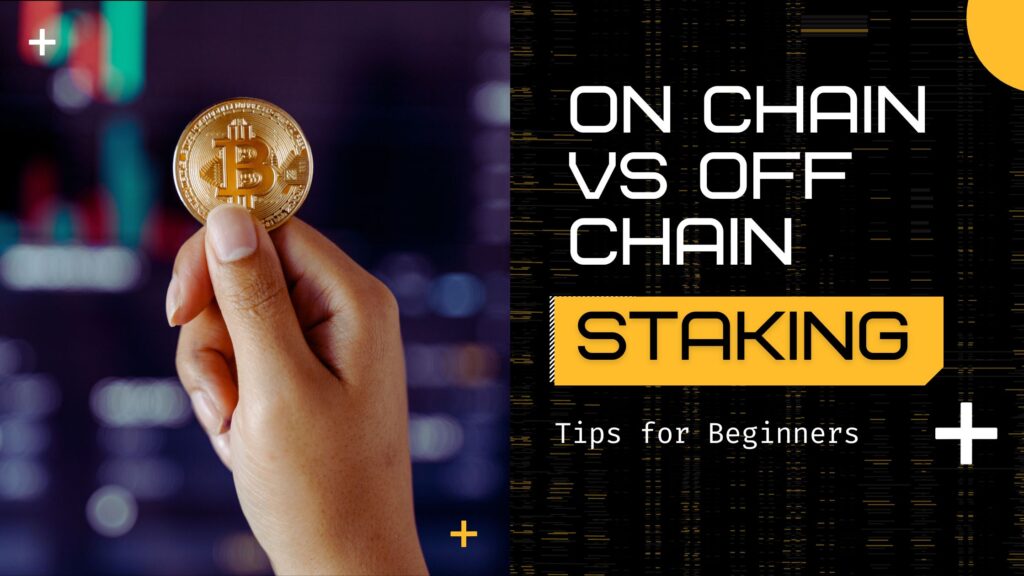Cryptocurrencies have become a popular investment option for many individuals around the world. With the growth of the crypto ecosystem, the concept of staking has gained prominence. Staking refers to the process of holding a certain amount of a cryptocurrency in a wallet to support the network’s operations and earn rewards in return. There are two types of staking: on-chain and off-chain. In this article, we will discuss the differences between on-chain staking and off-chain staking.
On-chain Staking
On-chain staking involves holding a certain amount of cryptocurrency in a wallet that is connected to the blockchain network. The cryptocurrency held in the wallet is locked and used to support the network’s operations. In return, stakers receive rewards in the form of additional cryptocurrency units. The rewards received are dependent on the amount of cryptocurrency held by the staker and the network’s staking reward system.
On-chain staking is a decentralized process that is supported by the blockchain network. It ensures that the network is secure and performs efficiently. As more stakers join the network, the level of security increases, making it difficult for malicious actors to disrupt the network. On-chain staking also provides stakers with voting rights on network decisions.
Off-chain Staking
Off-chain staking is a centralized process that involves holding a certain amount of cryptocurrency in a wallet that is not connected to the blockchain network. Instead, the wallet is connected to a third-party service provider that offers staking services. The third-party provider then uses the cryptocurrency held in the wallet to support the blockchain network’s operations. In return, stakers receive rewards in the form of additional cryptocurrency units.
Off-chain staking is a centralized process as it involves trusting the third-party service provider to perform the staking process correctly. The third-party service provider can charge a fee for their services, which can reduce the staker’s profits. Additionally, off-chain staking does not provide stakers with voting rights on network decisions.
Differences between On-chain and Off-chain Staking
Decentralization
On-chain staking is a decentralized process that is supported by the blockchain network, while off-chain staking is a centralized process that involves a third-party service provider. This means that on-chain staking is more secure and resistant to attacks than off-chain staking.
Security
On-chain staking provides a higher level of security than off-chain staking. This is because on-chain staking is supported by the blockchain network, which is highly secure and difficult to manipulate. Off-chain staking is dependent on the third-party service provider’s security measures, which may not be as robust as the blockchain network’s security measures.
Fees
Off-chain staking involves third-party service providers who can charge a fee for their services. On-chain staking, on the other hand, does not involve any third-party service providers, and there are no fees involved.
Voting Rights
On-chain staking provides stakers with voting rights on network decisions, while off-chain staking does not. This means that stakers who engage in on-chain staking have a say in how the network is run, while those who engage in off-chain staking do not.
FAQs
What are the benefits of staking?
Staking offers several benefits, such as earning rewards, supporting the network’s operations, and participating in the network’s decision-making process.
Is staking safe?
Staking is generally considered safe, especially when using on-chain staking. However, there are risks involved, such as the possibility of losing your staked cryptocurrency due to network failures or malicious actors. It is important to do your own research and carefully consider the risks before engaging in staking.
Can I unstake my cryptocurrency?
Yes, you can unstake your cryptocurrency. However, the process may vary depending on the specific cryptocurrency and staking platform used. Some platforms may have unstaking periods or penalties for early unstaking.
Which is better, on-chain or off-chain staking?
The choice between on-chain and off-chain staking depends on your personal preferences and risk tolerance. On-chain staking is generally considered more secure and decentralized, while off-chain staking may be more convenient for some users. It is important to carefully evaluate the risks and benefits of each option before making a decision.
How do I get started with staking?
To get started with staking, you first need to choose a cryptocurrency that supports staking and a staking platform. Once you have chosen a platform, you can create a wallet and transfer your cryptocurrency to it. From there, you can start staking and earning rewards.
Conclusion
On-chain staking and off-chain staking are two different approaches to the staking process. On-chain staking is a decentralized process that is supported by the blockchain network, while off-chain staking is a centralized process that involves third-party service providers. While both approaches have their advantages and disadvantages, on-chain staking is generally considered more secure and decentralized. It is important to carefully evaluate the risks and benefits of each approach before engaging in staking.
